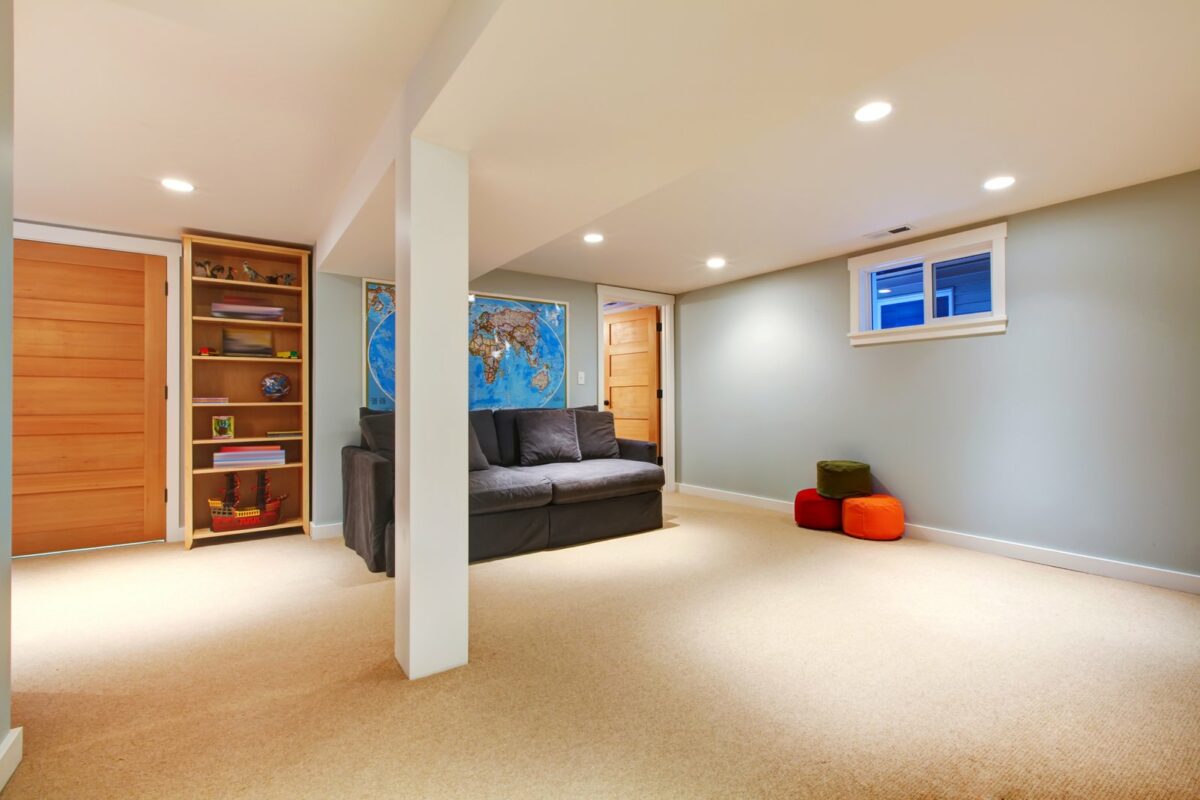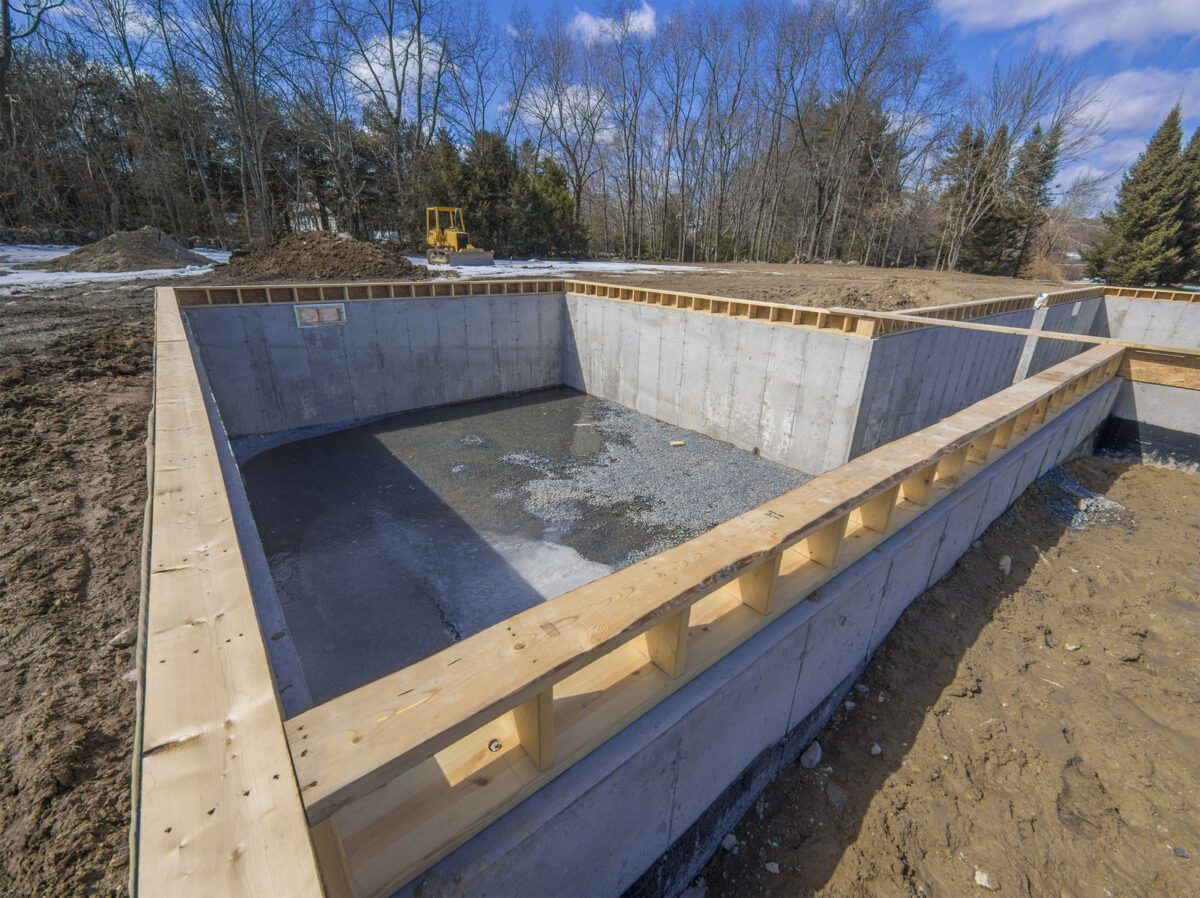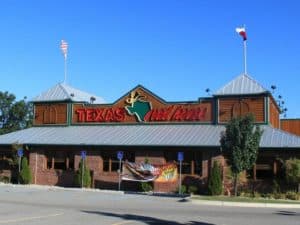Share the post "Rarity of Basements in Texas: Where to Find Them"
Basements are standard in many U.S. households and non-residential properties. Americans grow up with basements in their homes, and they provide the owners with valuable storage space, a spare bedroom, or a safe refuge in case of adverse weather conditions or a hurricane.
If you’re accustomed to having a basement, you might be surprised when you arrive in the Lone Star State and realize many homes don’t have basements. Yes, you can find them in some properties, but there aren’t many basements in Texas.

Basements In Texas: A Brief History
Today, basements are typically used for entertainment purposes or to add some extra storage space to a home. Located underneath the main floor, a basement should be at least eight feet tall. So, it can be easily used as a fully functional room, regardless of your need.
However, basements weren’t always necessarily used this way. Before basements were game rooms, spare bedrooms, and other utility rooms, they were built underground intentionally because they were dark, cold, and generally absent natural light.
These conditions made it suitable for storing water, wine, other alcohol, and sometimes food. Basements are less vulnerable to temperature and humidity changes than other parts of the house, so they also became handy for storing other items, like large furniture pieces, electronics, and other equipment.
Reason for Few Basements
In the 1950s, industrialization in the United States reached an unprecedented point that enormously impacted the construction industry. Digging underground structures, like basements or cellars, became more accessible and affordable. Moreover, creating more significant and more stable underground spaces was possible.
From then on, many houses throughout the country were built with basements. Homeowners no longer needed cellars for storing food and drink products. Instead, they would place unused furniture, seasonal goods like holiday decorations, or other items causing clutter in the home.
Some homeowners would carefully design their basements and install shelving, cabinets, and other storage units for their specific things. Basements are typically easier to access (with stairs) than attics, providing more convenient and larger storage space.
Others would use the extra space to create a room or two. People often convert their basements into cozy family rooms, games rooms, or even bedrooms. These days, with so many people working from home, basements are transformed into offices.
Colder Climates
Although basements are found nationwide, they’re particularly common in the Midwest and Northeast of the country. This is because cellars were initially better suited to colder regions. Furthermore, they rely on certain soil types and conditions that aren’t necessarily found everywhere.
This is also why you don’t find basements in certain other countries. Basements aren’t standard in many homes outside of the U.S. and Canada.

Basements Can Protect Homes
Another important reason for having basements is to protect the home and its residents during severe weather conditions or natural disasters. Because they’re built below the ground, they’re particularly effective in strong winds or intense storms.
The basement is often the safest place to take refuge if there’s a tornado or hurricane. The solid structure can remain intact even in the harshest of winds. However, it’s important to note that a basement may not be a safe refuge in an earthquake. If the building comes down, it could cause people to become trapped beneath the rubble.
Although you might not imagine so, basements are also highly functional in floods. Once properly built and waterproofed with pumps and the necessary equipment, cellars can protect a home from long-term water damage and prevent harmful flooding.
Basements provide excellent foundations for houses and are deep-rooted, giving them more stability and support than standard builds. This can help the property maintain its structure if there’s a fire or the main floors of the building are damaged in a natural disaster.
Why Don’t Houses In Texas Have Basements?
For the most part, there aren’t a lot of basements in Texas. This isn’t by chance; it certainly isn’t because Texans decided they don’t want them. There are several important reasons for this. In most cases, basements can’t be built safely or effectively here.
So, let’s look at the main reasons you likely won’t find many basements in Dallas, Houston, San Antonio, or most other Texas cities.
Geography
One of the main reasons basements aren’t standard in certain regions is the location of the water table. The water table is very close to the surface in places like Texas. This makes it challenging to ensure the basement is watertight after being built.
This is the same issue in Alabama, Louisiana, and Florida. It’s often the case that homes are better off without a basement than having a leaky one. Leaks are costly to repair and cause a build-up of moisture and dampness, which can weaken the home’s structural integrity or contribute to mold.
Another geographical factor that affects whether or not basements should be built is the bedrock. Large sections of Texas have limestone bedrock buried underneath a shallow layer of soil. Although limestone is regarded as a porous, soft rock, this isn’t necessarily the case when it comes to digging.

Limestone is even harder to break through than several other types of bedrock. It requires extra work hours and, sometimes, special equipment to penetrate, so digging a basement can be very expensive for some Texans. Cost-wise, it’s not a good tradeoff, considering the water table.
The final geographic consideration for basements in Texas is the frost line. A frost line is the depth at which the ground freezes when the temperatures are low. All building foundations are dug underneath the frost line to minimize the chances of the pipes freezing during winter.
In northern states, the frost line is usually several feet under the surface. So, foundations need to be dug quite deep. Therefore, basements or even crawl spaces make much sense for extra storage. However, in Texas, the frost line is much closer to the surface so the foundations don’t need to be deep.
Texas Soil
Naturally, the soil in an area impacts how structures can be built, especially when it comes to buildings with significant underground sections like basements. Loam, which contains sand, silt, and clay, is the best foam for digging foundations.
The soil in Texas (especially in the north) is quite expansive. So, if it rains or the soil gets wet, it swells and expands. During the summer or when temperatures begin to rise, the soil shrinks. This expansiveness can cause trouble in the foundations if they’re dug very deep.
That said, having a foundation with expansive soils is still possible. It just requires much more engineering work, increasing the property’s price. This extra cost isn’t worth it for a lot of people.
Basements In Texas Are Prone To Flooding
Texas isn’t known for having a lot of rainfall, so flooding due to rain isn’t all that common. The main issue with flooding basements relates to the water table. As mentioned, this is just a few feet below the surface throughout most of the state.
To protect a basement against flooding in Texas, installing a special water-sealing is necessary, which is expensive. In addition, you’ll need to ensure you have good-quality sump pumps. You’ll also need to keep the pumps well-maintained if they’re called into action. Otherwise, you could come home to a flooded basement.
Basements In Texas Aren’t Necessary
Building below the frost line is the main requirement for digging your foundations. Dig any more profound, making the process more complicated, complex, and expensive. In most cases, there’s no need to take the extra risk of building a basement if you don’t have to.
In northern states, you have to dig deeper foundations, so adding a basement makes a lot more sense. Since basements have never been common in Texas, most buyers (at least local ones) won’t expect there to be a basement in the property. Therefore, adding one doesn’t necessarily increase the value of the property.
Are Basements Illegal In Texas?
It’s normal to wonder whether basements in Texas are illegal, given that they’re very uncommon throughout the state. The truth is that basements are legal. You can build one for your home if you wish. However, because of the problems outlined above, most people don’t.
In general, very few residential properties have basements. The risks and costs make them unnecessary. However, it’s more common for commercial buildings in Texas to have basements. Businesses may need the additional space and can offset the costs through revenue and profit.
Interestingly, the Texas State Capitol Building in Austin is one of the few Texas buildings with a basement. Even though Austin’s geography is the exact opposite of what you want for digging a basement, the building began renovations in 1990, including a four-story underground extension.
The extension consists of several tunnels and is an enormous underground structure. Workers had to excavate the limestone ground with a diamond belt saw with a 10-foot blade.
References
Share the post "Rarity of Basements in Texas: Where to Find Them"
Christian Linden is a seasoned writer and contributor at Texas View, specializing in topics that resonate with the Texan community. With over a decade of experience in journalism, Christian brings a wealth of knowledge in local politics, culture, and lifestyle. He holds a Bachelor's degree in Communications from the University of Texas. When he's not writing, Christian enjoys spending weekends traveling across Texas with his family, exploring everything from bustling cities to serene landscapes.











